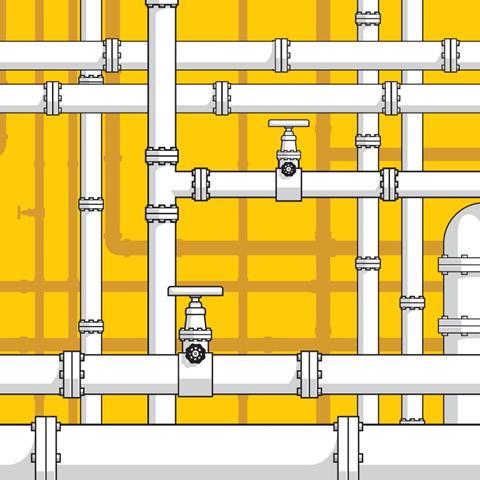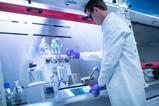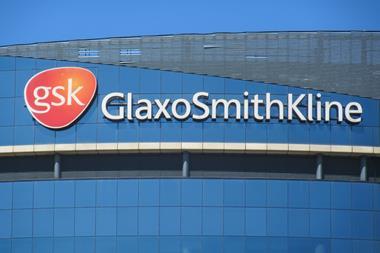Continuous flow manufacturing of pharmaceuticals offer the flexibility to accelerate the drug development process
Situated north of Newcastle, just outside the small town of Alnwick, Arcinova is a relatively young UK company that aims to bring smarter and leading-edge chemistry processing to the pharmaceutical industry. As a CRDO (contract research and development organisation) hybrid, Arcinova works with biopharmaceutical companies – large, small and virtual – to deliver the specific requirements needed for their projects. Arcinova has also established scientific expertise in a series of chemistry fields, ranging from continuous flow manufacturing to isotopic labelling and drug formulation.
In what is often considered a competitive and challenging market, operating effectively in the CRDO space involves innovating at every opportunity, and responding to and driving forward the changing trends in pharma. The emerging fields of oncology and biologics necessitate an interdisciplinary and collaborative effort between chemists and biologists to aid pharmaceutical development. In addition to these new disease treatments, small molecule synthesis is still commonplace and necessary in the pharma industry – with more than 70% of drug approvals each year being small molecule related. Continuous process manufacturing is one synthesis strategy that is helping to revolutionise medicine manufacture and deliver effective therapies to patients quicker.
Fundamentals of flow

Manufacturing processes can fall into one of two categories: batch and continuous. In the pharma industry, batch manufacturing is overwhelmingly dominant. Here, reactants are added to a single reactor, which has been set up to perform the reaction under certain conditions. When the reaction is complete, the product will be extracted and the reactor is cleaned before being set up for another reaction – rinse and repeat. However, this setup is often associated with several issues, including excessive solvent use, a large reactor that requires extensive plant space, and finally time-consuming and wasteful optimisation processes. For instance, if the conditions of a batch process need to be optimised, the reaction must be run completely with a pre-defined set of processing parameters, before being reset and altered.
On the other hand, continuous flow manufacturing relies on one principle: maintaining a continuous flow of reactants under controlled reactor conditions to synthesise a continued flow of product. This streamlined approach to chemical synthesis enables multiple components of reactions to be performed sequentially. For instance, following product formation, the product can be directly moved into other processes such as re-crystallisation.
Since continuous flow manufacturing’s introduction to the pharma and fine chemical sector (as exemplified by GSK with initial pilot systems built in Stevenage) multiple generations of improving technology have led to its slow but steady adoption for pharmaceutical manufacture. First-generation reactors suffered issues associated with reliability, maintenance and cleaning, resulting in a steep learning curve. But with new technologies and engineering solutions, this is changing.
In challenging reactions which are often difficult to control, continuous manufacturing allows precise control of the conditions
Continuous flow manufacturing brings several advantages to drug development that have resulted in an increased adoption of the technology over recent years. It offers the ability to improve the yield and purity of an active pharmaceutical ingredient (API), while also improving efficiency and operating costs. This technology is readily being adopted to innovate pharmaceutical production, with pharma companies – large and small – increasingly looking to outsource development to experts in the field.
In pharmaceutical development, there is no ‘one-size-fits-all’ for which technology or approach is best. In fact, when considering the broad portfolio of chemical reactions, slower reactions best fit batch manufacturing and fast reactions favour continuous manufacturing. The ‘grey zone’ between the two is where the advantages of each technology on a case-by-case basis come into play.
Fundamentally, flow manufacturing offers a more flexible and controlled approach to drug development and API synthesis. In challenging reactions such as cryogenics, Grignard and organo-lithium reactions, which are often difficult to control, continuous manufacturing is more appropriate as it allows precise control of the conditions. This improved control of reactivity also allows for easier optimisation of processes in shorter time-spans.
Continuous adoption
The modern pharmaceutical industry has brought with it changes to how drugs are developed. Gone are the days of the multi-thousand tonne blockbuster drugs, and instead the majority of future drugs will be at the single digit tonne scale. This shift in volume requires a complementary fast-paced and flexible approach to manufacturing which has driven the development of modern flow technologies. Production systems are now modular in their design, with the necessary components being employed for the specific project. What one day would be used to synthesise 10kg per day of one API could the next – after careful disassembly, cleaning and re-engineering – be used for the next API project.
Adapting any process to continuous manufacturing, either from initial project discussions or through upgrading a batch-based process, requires in-depth chemical understanding as well as sufficient technology. Consider any industrial or API production process and it is likely to consist of a series of reactions involving multiple reactants to yield a final product. Optimising processes to operate efficiently in continuous reactors requires both the flexible technology required by the industry, as well as a thorough understanding of the chemistry driving the reaction.
Imagine a reactor that automatically finds the optimum conditions for a given reaction – this might sound like the dream of chemical engineers, but it is close to becoming a reality
To fully understand what is happening in your reaction, one must consider the suite of potential chemical reactions that could be possible. Are there any transient intermediates that appear prior to product formation? Are there any potential side-reactions that occur which could result in loss of product yield? What effect is solvent, temperature and agitation having on this process? The answers to these questions will help to identify those opportunities that allow for the streamlining of the reaction and help adapt it for continuous manufacturing.
But there are other steps that can be performed that could have been overlooked. For example, if the first step of a synthesis performed best in the solvent isopropyl alcohol and the second best in ethanol, and then the second step performed best in ethanol, it might be more beneficial across the whole process to run both steps in ethanol, despite the drop in yield in the first step. Gaining this in-depth understanding of the chemistry of the whole process is essential for ensuring synthetic success.
Innovation through acceleration
The innovation approach at Arcinova focuses on a number of areas. First, from a purely research perspective, understanding and adapting to the fundamental shifts in pharma can prove advantageous. Combining the disciplines of chemistry, biology and bioinformatics allows for interesting and potentially ground-breaking developments in personalised medicine and the subsequent impacts on drug development. In addition, learning from patient data allows treatments to be tailored more to the specific needs of the disease and the more efficient development of more effective drugs.
Second, in terms of development and manufacturing, new innovative approaches in continuous manufacturing comes with the advantage of often accelerating and reducing the cost of the syntheses compared with batch alternatives.
One recent example of the latter implemented by Arcinova was to investigate the synthesis of 6-R -2-R -hydroxynorketamine. The starting point was an eight-stage process which, based on batch processing, would require 40–45 batches overall to produce a 1kg lot of the final product. The least robust and efficient step in the synthesis was the thermal rearrangement of a hydroxycyclopentane to give the ring-expanded cyclohexanone. Despite only being one step of the synthesis, poor yield of an intermediary product can be detrimental to the whole process and can result in an unnecessary loss of productivity.
Through careful research and development, the reaction was adapted to continuous flow manufacturing. This led to an improvement in yield from 50% to 99%, improvement in purity from 85% to 97% and a 10-fold increase in the overall product. Investigations are still ongoing to adapt further stages of the synthesis to flow manufacturing and Arcinova has been awarded an Innovate UK grant to accelerate the implementation of this approach.
The next generation of continuous manufacturing
Imagine a reactor that dynamically and automatically finds the optimum conditions for a given reaction within a continuous manufacturing process. This might sound like the dream of chemical engineers, but it is close to becoming a reality.
Working jointly with the University of Nottingham following the award of a £1.5 million grant from Innovate UK, Arcinova is working to develop an autonomous reactor that combines both continuous flow technology and characterisation methods. This reactor represents the future of manufacturing technology, made possible due to the pinpoint control of conditions available to the scientists through continuous flow technology.
Following the reactor start up with a baseline set of reaction conditions, the reaction will reach a ‘steady state’ where product formation and reactant consumption have equilibrated. Any subsequent alteration in reaction conditions, such as temperature and pressure, will manifest in the establishment of another steady state. By comparing these two steady states, an algorithm can optimise the process to maximise product formation.
This process can also be made more integrated through the inclusion of characterisation tools within the reactor itself. For instance, IR spectrometer probes can be incorporated, allowing direct analysis of the appearance of a product peak and simultaneous reactant peak disappearance.
The two fields of continuous flow manufacturing and informatics are leading to a revolution in the large-scale synthesis of APIs and other drug molecules. Small molecule therapies can now be manufactured using new methodologies by offering an accelerated route for drugs to enter clinical trials or the market. Such changes will only positively impact patient care. Today, continuous flow manufacturing can be achieved through the use of flexible modular reactors that can be engineered to meet the needs of a specific project. Tomorrow, the solution could be autonomous reactors, or it could be other yet-to-be discovered innovations.
Gareth Jenkins is the chief scientific officer at Arcinova
Paul Quigley is head of drug substance at Arcinova
Samuel Bourne is a process development chemist at Arcinova


















No comments yet